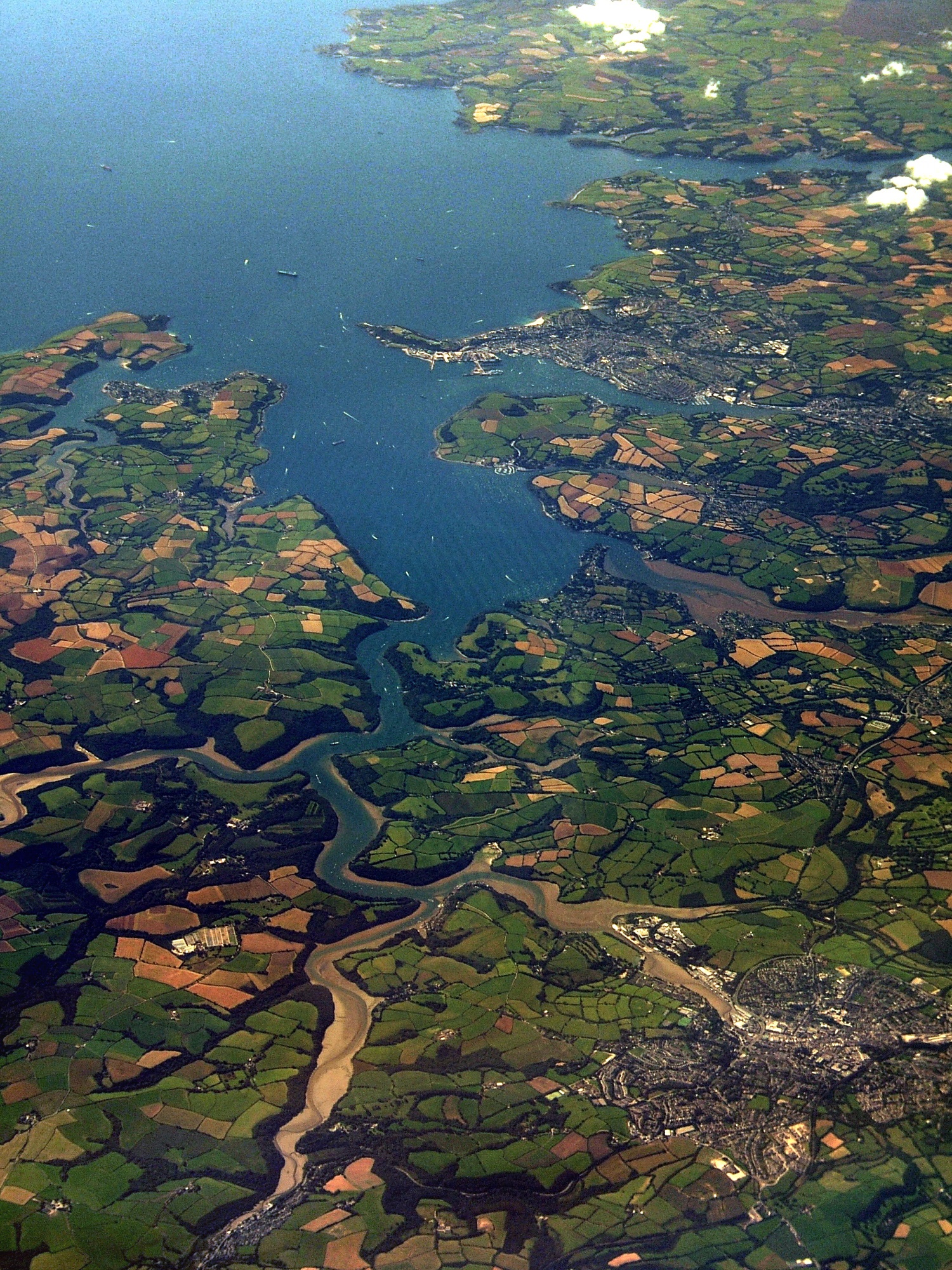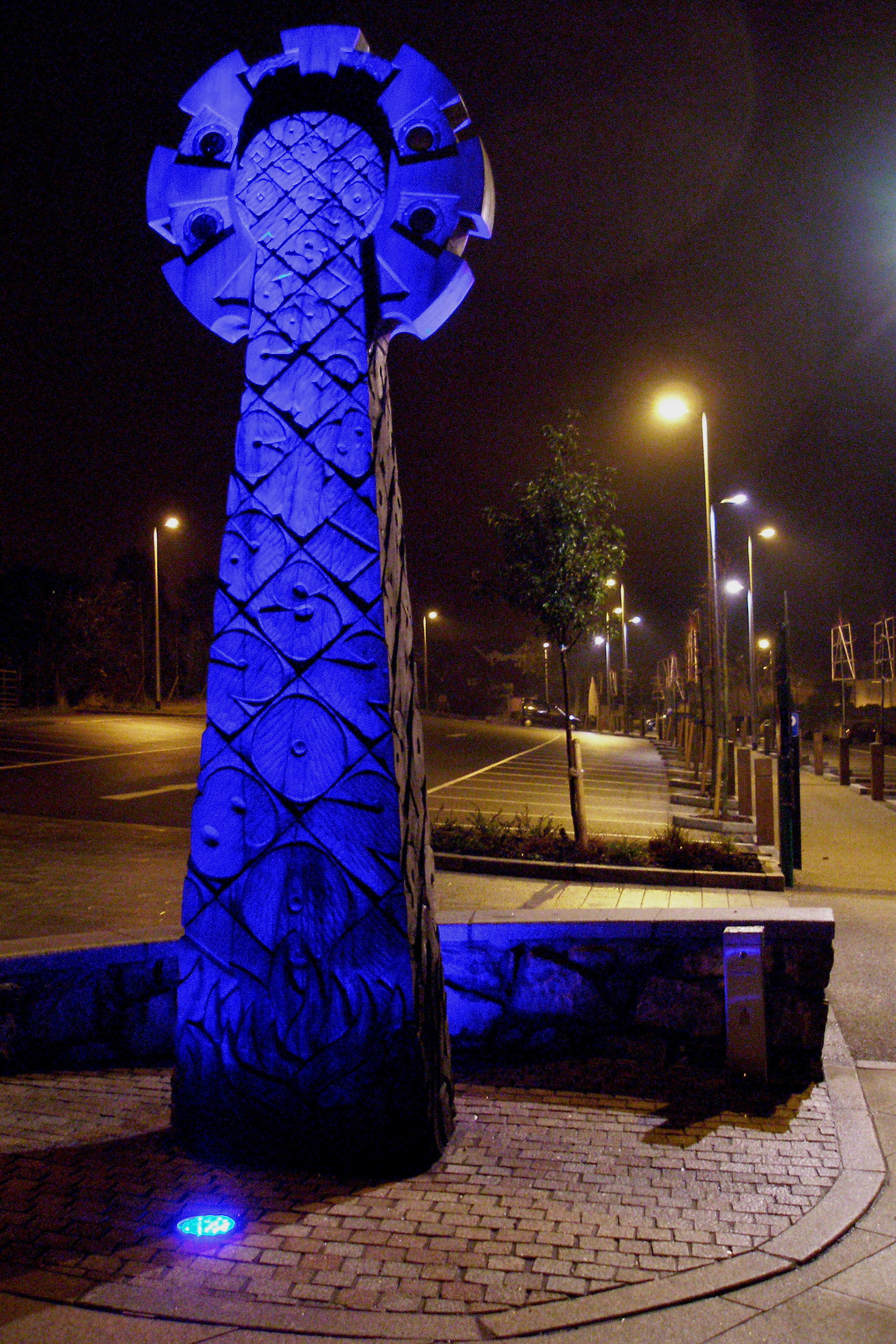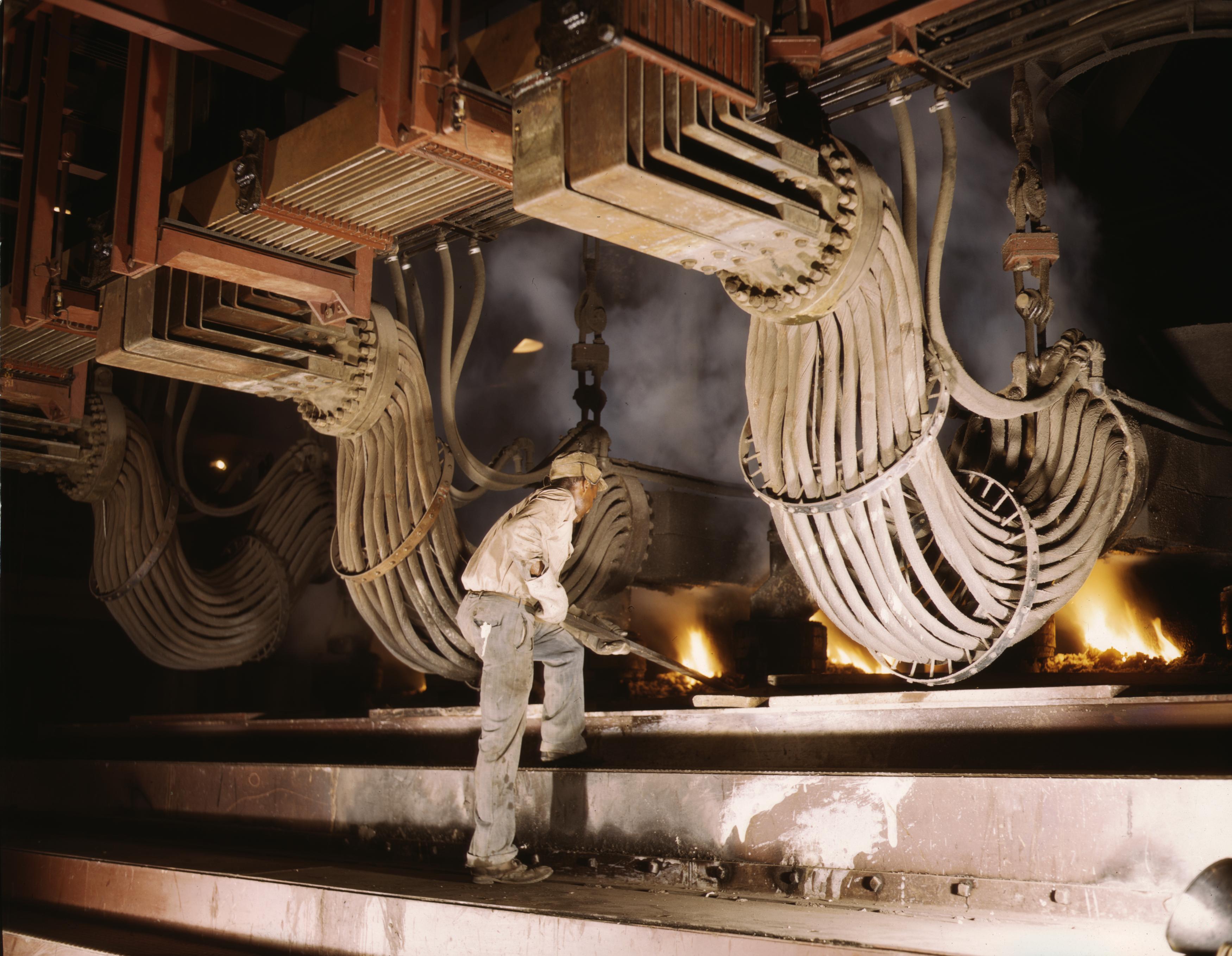|
Redruth And Chasewater Railway
The Redruth and Chasewater Railway was an early mineral railway line in Cornwall, England, UK. It opened in 1825 and was built to convey the output from copper mines in the Gwennap area to wharves on Restronguet Creek (off the Carrick Roads, Fal Estuary) around Devoran, and to bring in coal to fuel mine engines; later it carried timber for pit props and also house coal. A little over long, it was built to a narrow gauge railway, narrow gauge and used horse traction at first, later using steam locomotives. Solely dependent on the economy of the mines it served, it prospered when they did, and when they declined, the railway declined too; it finally closed in 1915. It never carried passengers. Much of its route can still be traced, and part of it forms the course of the Redruth and Chasewater Railway Trail, an outdoor leisure facility. History Antecedents Prior to the nineteenth century, much mineral extraction had taken place in the Cornish peninsula, but this had been limit ... [...More Info...] [...Related Items...] OR: [Wikipedia] [Google] [Baidu] |
Cornwall
Cornwall (; or ) is a Ceremonial counties of England, ceremonial county in South West England. It is also one of the Celtic nations and the homeland of the Cornish people. The county is bordered by the Atlantic Ocean to the north and west, Devon to the east, and the English Channel to the south. The largest urban area is the Redruth and Camborne conurbation. The county is predominantly rural, with an area of and population of 568,210. After the Redruth-Camborne conurbation, the largest settlements are Falmouth, Cornwall, Falmouth, Penzance, Newquay, St Austell, and Truro. For Local government in England, local government purposes most of Cornwall is a Unitary authorities of England, unitary authority area, with the Isles of Scilly governed by a Council of the Isles of Scilly, unique local authority. The Cornish nationalism, Cornish nationalist movement disputes the constitutional status of Cornwall and seeks greater autonomy within the United Kingdom. Cornwall is the weste ... [...More Info...] [...Related Items...] OR: [Wikipedia] [Google] [Baidu] |
Wrought Iron
Wrought iron is an iron alloy with a very low carbon content (less than 0.05%) in contrast to that of cast iron (2.1% to 4.5%), or 0.25 for low carbon "mild" steel. Wrought iron is manufactured by heating and melting high carbon cast iron in an open charcoal or coke hearth or furnace in a process known as puddling. The high temperatures cause the excess carbon to oxidise, the iron being stirred or puddled during the process in order to achieve this. As the carbon content reduces, the melting point of the iron increases, ultimately to a level which is higher than can be achieved by the hearth, hence the wrought iron is never fully molten and many impurities remain. The primary advantage of wrought iron over cast iron is its malleability - where cast iron is too brittle to bend or shape without breaking, wrought iron is highly malleable, and much easier to bend. Wrought iron is a semi-fused mass of iron with fibrous slag inclusions (up to 2% by weight), which give it ... [...More Info...] [...Related Items...] OR: [Wikipedia] [Google] [Baidu] |
Copper
Copper is a chemical element; it has symbol Cu (from Latin ) and atomic number 29. It is a soft, malleable, and ductile metal with very high thermal and electrical conductivity. A freshly exposed surface of pure copper has a pinkish-orange color. Copper is used as a conductor of heat and electricity, as a building material, and as a constituent of various metal alloys, such as sterling silver used in jewelry, cupronickel used to make marine hardware and coins, and constantan used in strain gauges and thermocouples for temperature measurement. Copper is one of the few metals that can occur in nature in a directly usable, unalloyed metallic form. This means that copper is a native metal. This led to very early human use in several regions, from . Thousands of years later, it was the first metal to be smelted from sulfide ores, ; the first metal to be cast into a shape in a mold, ; and the first metal to be purposely alloyed with another metal, tin, to create bronze, ... [...More Info...] [...Related Items...] OR: [Wikipedia] [Google] [Baidu] |
United Mines
United may refer to: Places * United, Pennsylvania, an unincorporated community * United, West Virginia, an unincorporated community Arts and entertainment Films * ''United'' (2003 film), a Norwegian film * ''United'' (2011 film), a BBC Two film * ''The United'' (film), an unreleased Arabic-language film Literature * ''United!'' (novel), a 1973 children's novel by Michael Hardcastle Music * United (band), Japanese thrash metal band formed in 1981 Albums * ''United'' (Commodores album), 1986 * ''United'' (Dream Evil album), 2006 * ''United'' (Marvin Gaye and Tammi Terrell album), 1967 * ''United'' (Marian Gold album), 1996 * ''United'' (Phoenix album), 2000 * ''United'' (Woody Shaw album), 1981 Songs * "United" (Judas Priest song), 1980 * "United" (Prince Ital Joe and Marky Mark song), 1994 * "United" (Robbie Williams song), 2000 * "United", a song by Danish duo Nik & Jay featuring Lisa Rowe * "United (Who We Are)", a song by XO-IQ, featured in the television serie ... [...More Info...] [...Related Items...] OR: [Wikipedia] [Google] [Baidu] |
Great Consols
Consolidated Mines, also known as Great Consolidated mine, but most commonly called Consols or Great Consols was a metalliferous mine about a mile ESE of the village of St Day, Cornwall, England. Mainly active during the first half of the 19th century, its mining sett was about 600 yards north–south; and 2,700 yards east–west, to the east of Carharrack. Although always much troubled by underground water, the mine was at times highly profitable, and it was the largest single producer of copper ore in Cornwall. Today the mine is part of the Cornwall and West Devon Mining Landscape World Heritage Site. Geology The country rock at the mine was killas and the mine's main produce was copper, though small amounts of black tin, arsenic, pyrite and zinc ore were also raised. There are about eight main lodes at the mine, crossed by elvan dykes. The most important lode was Virgin Lode which was stoped for over .Dines 1956, p.418 History to 1800 Although there had been ... [...More Info...] [...Related Items...] OR: [Wikipedia] [Google] [Baidu] |
Chacewater
Chacewater () is a village and civil parish in Cornwall, England, UK. It is situated approximately east of Redruth. The hamlets of Carnhot, Cox Hill, Creegbrawse, Hale Mills, Jolly's Bottom, Salem, Saveock, Scorrier, Todpool, Twelveheads and Wheal Busy are in the parish. At the 2011 census a population of 3,870 was quoted. Village Chacewater sits in a valley between hills separating it from the villages of Threemilestone, Scorrier and St Day. Nearby is Wheal Busy, the Poldice Valley and the Coast to Coast cycle route. The village has a pub and a club, the Chacewater Literary Institute. There are also a health centre, primary school, village hall and small selection of shops. A free monthly magazine ''What's on in Chacewater'' reached its 200th issue in July 2007. It lists events and activities, such as the Football Club, a Cricket Club, a Bowling Club, the Chacewater Old Cornwall Society, the Chacewater Players, the Carnival (held in August), the Blind Club an ... [...More Info...] [...Related Items...] OR: [Wikipedia] [Google] [Baidu] |
Lanner, Cornwall
Lanner () is a village and civil parish in west Cornwall, England, United Kingdom. It is situated on the A393 about south-east of Redruth.Ordnance Survey: Landranger map sheet 203 ''Land's End'' Lanner is in the St Day, Carharrack and Lanner ward which had a collective population of 5,438 in 2001. The population of Lanner civil parish was 2,493 in the 2001 census, increasing to 2,690 at the 2011 census.GENUKI website Lanner; retrieved 10 February 2015 The village has a , Lanner School. History The name "Lanner" comes from the Cornish "''Lannergh''", which means ...[...More Info...] [...Related Items...] OR: [Wikipedia] [Google] [Baidu] |
Great County Adit
The Great County Adit, sometimes called the County Adit, or the Great Adit was a system of interconnected adits that helped drain water from the tin and copper mines in the Gwennap area of Cornwall, in the United Kingdom. Construction started in 1748 and it eventually reached a length of over of a tunnel, providing drainage to over 100 mines at an average depth of . The adit was the brainchild of John Williams (born 1714) of Scorrier who was the manager of Poldice mine. Although work was started in 1748, it did not reach Poldice mine until the late 1760s. By 1778 the adit had been extended past Wheal Busy to Wheal Peevor, and another branch, known as the Consols Adit was driven west in the 1770s and 80s to drain the Consolidated Mines and United Mines. By 1792 a branch from Poldice extended to Wheal Unity. The portal of the adit is in the Carnon Valley below the hamlet of Twelveheads. In 1839, probably at its peak, it discharged over 14.5 million gallons (66 million litr ... [...More Info...] [...Related Items...] OR: [Wikipedia] [Google] [Baidu] |
Neilson And Company
Neilson and Company was a locomotive manufacturer in Glasgow, Scotland. The company was started in 1836 at McAlpine Street by Walter Neilson and James Mitchell to manufacture marine and stationary engines. In 1837 the firm moved to Hyde Park Street and was known as Kerr, Mitchell and Neilson and, in 1840, Kerr, Neilson and Company, becoming Neilson and Mitchell in 1843. Locomotive building began in 1843 for the local railways. In 1855 production of marine and stationary engines discontinued and the company changed its name again to Neilson and Company. Among those who later became notable in the field were Henry Dübs and Patrick Stirling. By 1861, business had increased to such an extent, that a new works was built at Springburn, also named "Hyde Park Works." In 1864, Henry Dübs set up in business on his own at Queens Park Works, as Dübs and Company, taking a number of key staff with him. James Reid, who had previously worked for Neilson, however, returned and becam ... [...More Info...] [...Related Items...] OR: [Wikipedia] [Google] [Baidu] |
16 & 17 Vict
Sixteen or 16 may refer to: *16 (number) *one of the years 16 BC, AD 16, 1916, 2016 Films * '' Pathinaaru'' or ''Sixteen'', a 2010 Tamil film * ''Sixteen'' (1943 film), a 1943 Argentine film directed by Carlos Hugo Christensen * ''Sixteen'' (2013 Indian film), a 2013 Hindi film * ''Sixteen'' (2013 British film), a 2013 British film by director Rob Brown Music *The Sixteen, an English choir *16 (band), a sludge metal band * Sixteen (Polish band), a Polish band Albums * ''16'' (Robin album), a 2014 album by Robin * 16 (Madhouse album), a 1987 album by Madhouse * ''Sixteen'' (album), a 1983 album by Stacy Lattisaw *''Sixteen'' , a 2005 album by Shook Ones * ''16'', a 2020 album by Wejdene Songs * "16" (Sneaky Sound System song), 2009 * "Sixteen" (Thomas Rhett song), 2017 * "Sixteen" (Ellie Goulding song), 2019 *"Six7een", by Hori7on, 2023 *"16", by Craig David from ''Following My Intuition'', 2016 *"16", by Green Day from ''39/Smooth'', 1990 *"16", by Highly Suspect from ' ... [...More Info...] [...Related Items...] OR: [Wikipedia] [Google] [Baidu] |
Redruth Railway Act 1853
Redruth ( , ) is a town and civil parish in Cornwall, England, United Kingdom. According to the 2011 census, the population of Redruth was 14,018 In the same year the population of the Camborne-Redruth urban area, which also includes Carn Brea, Illogan and several outlying villages, stood at 55,400 which made it the largest conurbation in Cornwall. Redruth lies approximately at the junction of the A393 and A3047 roads, on the route of the old London to Land's End trunk road (now the A30), and is approximately west of Truro, east of St Ives, north east of Penzance and north west of Falmouth. Camborne and Redruth together form the largest urban area in Cornwall and before local government reorganisation were an urban district. Toponymy The form ''Unyredruth'' (Euny being the patron saint) is recorded in 1563. Earlier forms are ''Ridruthe'' (1259), ''Rudruth'' (1283) and ''Riddruth'' (1291). The name Redruth derives from its older Cornish name, , meaning 'red ford'� ... [...More Info...] [...Related Items...] OR: [Wikipedia] [Google] [Baidu] |
Smelter August 1872
Smelting is a process of applying heat and a chemical reducing agent to an ore to extract a desired base metal product. It is a form of extractive metallurgy that is used to obtain many metals such as iron, copper, silver, tin, lead and zinc. Smelting uses heat and a chemical reducing agent to decompose the ore, driving off other elements as gases or slag and leaving the metal behind. The reducing agent is commonly a fossil-fuel source of carbon, such as carbon monoxide from incomplete combustion of coke—or, in earlier times, of charcoal. The oxygen in the ore binds to carbon at high temperatures, as the chemical potential energy of the bonds in carbon dioxide () is lower than that of the bonds in the ore. Sulfide ores such as those commonly used to obtain copper, zinc or lead, are roasted before smelting in order to convert the sulfides to oxides, which are more readily reduced to the metal. Roasting heats the ore in the presence of oxygen from air, oxidizing the ore and libe ... [...More Info...] [...Related Items...] OR: [Wikipedia] [Google] [Baidu] |







